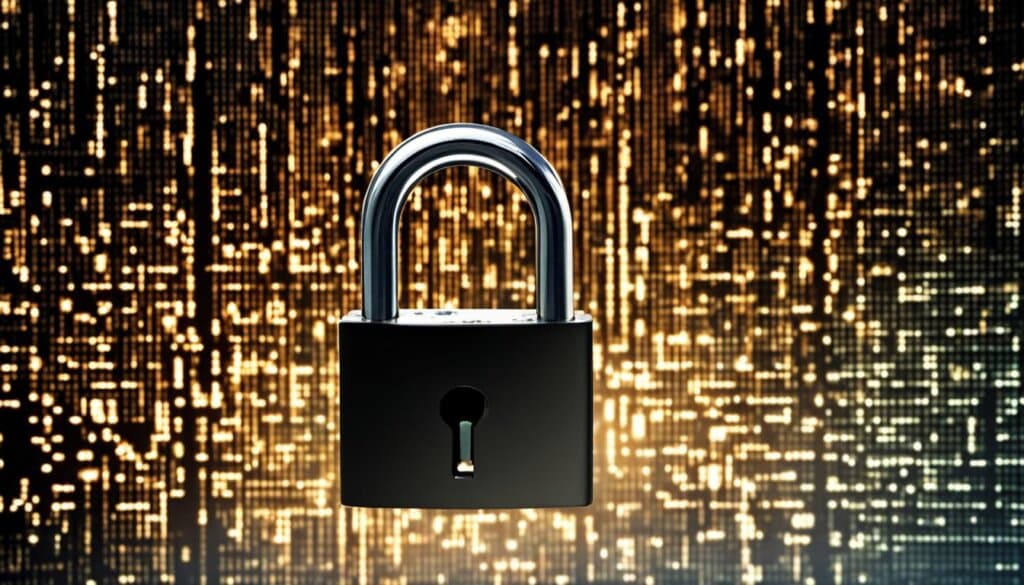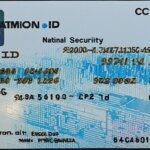Table of Contents
The purpose of the network security authentication function is to require users to prove their identity, determine which resources they can access, and keep track of their actions. Authentication, authorization, and accounting (AAA) are network services collectively known as AAA. Authentication ensures that users are who they say they are, while authorization determines the resources they can access. Accounting keeps track of user actions. Authentication can be achieved through various methods such as usernames and passwords, cards, retina scans, voice recognition, and fingerprints. The authentication function plays a crucial role in safeguarding digital identities and ensuring secure access control.
Authentication is a fundamental aspect of network security, serving as the front line of defence against unauthorized access and potential threats. By implementing robust authentication mechanisms, organizations can protect their valuable data, systems, and resources from malicious actors. Additionally, authentication helps maintain accountability by linking user actions to specific identities. Whether it’s logging into a corporate network, accessing online banking services, or securing remote access, authentication plays a pivotal role in providing a secure and trusted environment for users.
Types of Authentication Factors
When it comes to verifying a user’s identity, there are several types of authentication factors that can be used. These factors provide an extra layer of security, ensuring that only authorized individuals can access protected resources. Let’s explore some of the most common authentication factors:
1. Single-Factor Authentication (SFA)
Single-factor authentication is the most basic type of authentication. It relies on a user ID and password combination to verify the user’s identity. While simple to implement, SFA is also the least secure method, as it only requires one factor for authentication.
2. Two-Factor Authentication (2FA)
Organizations are increasingly adopting stronger authentication methods, such as two-factor authentication. 2FA requires the user to provide two different authentication factors for verification. This could include something the user knows, like a PIN or password, combined with something the user has, such as a security token or a mobile phone. By using two factors, 2FA enhances security and reduces the risk of unauthorized access.
3. Multifactor Authentication (MFA)
Similar to 2FA, multifactor authentication requires the user to provide multiple authentication factors. These factors can include something the user knows, something the user has, and something the user is. For example, in addition to a password and a security token, the user may need to provide a biometric identification, such as fingerprints or facial scans. MFA provides an additional layer of protection, making it more difficult for unauthorized individuals to access sensitive information or resources.
By implementing strong authentication factors, organizations can enhance their overall security posture and protect against unauthorized access. The combination of multiple factors adds an extra level of confidence in verifying the user’s identity, reducing the risk of data breaches and other security incidents.
Image:
Importance of Authentication in Cybersecurity
Authentication is a critical component of cybersecurity, offering organizations the ability to exercise control over access to their networks and resources. By verifying the identity of users and processes, authentication ensures that only authorized individuals or systems can obtain entry to protected resources. This includes personal computers, wireless networks, databases, websites, and other network-based applications and services.
Following the authentication process, authorization takes place, which determines whether the authenticated entity should be granted access to a specific resource. Access control, another crucial aspect of authentication, involves restricting access to certain users or entities. Together, authentication and access control are indispensable in maintaining the security of an organization’s network infrastructure.
“Authentication is the gatekeeper to a safe and secure network environment, allowing only trusted individuals and systems to gain access and reducing the risk of unauthorized intrusion.”
Authentication plays a vital role in safeguarding sensitive information, preventing data breaches, and mitigating cybersecurity risks. It acts as a safeguard against unauthorized access attempts, protecting against malicious actors and ensuring that only trusted entities interact with an organization’s digital assets. By controlling access to networks and resources, authentication helps prevent data loss, unauthorized modifications, and the disruption of critical systems and services.
In addition, authentication forms the foundation of access control mechanisms, enabling organizations to implement granular access permissions based on user roles and responsibilities. This ensures that each user can only access the resources necessary for their job function, reducing the risk of data leaks and unauthorized activities within the network.
Strong authentication methods, such as multi-factor authentication (MFA), add an extra layer of security by requiring users to provide multiple forms of verification. This could include a combination of passwords, biometric authentication (e.g., fingerprints or facial recognition), or physical tokens. These additional factors significantly strengthen the authentication process, making it more difficult for unauthorized individuals to gain access even if they manage to acquire a user’s credentials.
Overall, authentication is a vital aspect of cybersecurity, enabling organizations to defend against unauthorized access attempts, protect sensitive data, and maintain the integrity and availability of their network resources.
Benefits of Authentication in Cybersecurity:
- Enhanced protection against unauthorized access
- Prevention of data breaches and unauthorized modifications
- Reduction of cybersecurity risks
- Granular access control based on user roles
- Strengthened security through multi-factor authentication
The value of robust authentication mechanisms cannot be understated. It forms the cornerstone of cybersecurity and is crucial in establishing trust, protecting digital assets, and maintaining the overall security posture of an organization.
| Authentication Benefits | Description |
|---|---|
| Enhanced Protection | Authentication ensures that only authorized individuals or systems can access protected resources, preventing unauthorized access attempts. |
| Data Breach Prevention | By verifying the identity of users and processes, authentication helps prevent data breaches and unauthorized modifications to sensitive information. |
| Cybersecurity Risk Reduction | Authentication plays a critical role in mitigating cybersecurity risks by controlling access to networks and resources. |
| Granular Access Control | Authentication enables organizations to implement fine-grained access permissions based on user roles and responsibilities. |
| Multi-Factor Authentication | Robust authentication methods, such as multi-factor authentication, add an extra layer of security by requiring multiple forms of verification. |

Authentication in Practical Use Cases
Authentication plays a crucial role in securing access to various resources in different practical scenarios. In corporate systems, authentication verifies the identity of employees, granting them access to confidential information and applications. This ensures that only authorized individuals can retrieve sensitive data and perform their tasks securely.
In the realm of online banking, authentication methods are essential to safeguard bank accounts and enable authorized users to carry out financial transactions. By verifying the identity of account holders, these methods protect against unauthorized access and fraudulent activities, enhancing the overall security of online banking platforms.
Secure remote access is yet another practical application where authentication is vital. It verifies the identity of remote users connecting to an organization’s network from offsite locations. This authentication process ensures that only authorized individuals can enter the network, mitigating the risk of unauthorized access and potential security breaches.
In healthcare, authentication protects electronic healthcare records (EHRs), safeguarding the privacy and confidentiality of patient information. By verifying the identities of authorized healthcare professionals, authentication allows them to access EHRs securely, facilitating the provision of quality healthcare services while maintaining data privacy.
Moreover, authentication plays a significant role in e-commerce transactions, where verifying customer identities is crucial to ensure secure online transactions. By authenticating customers during the purchasing process, organizations can protect against fraudulent activities, such as identity theft and unauthorized access to payment information.
These practical use cases highlight the importance of authentication in different sectors and demonstrate how it preserves the security and privacy of sensitive information. By implementing robust authentication measures, organizations can establish trust, enhance access control, and safeguard their resources and user data against unauthorized access and cyber threats.
FAQ
What is the purpose of the network security authentication function?
The purpose of the network security authentication function is to require users to prove their identity, determine which resources they can access, and keep track of their actions. Authentication, authorization, and accounting (AAA) are network services collectively known as AAA. Authentication ensures that users are who they say they are, while authorization determines the resources they can access. Accounting keeps track of user actions. Authentication can be achieved through various methods such as usernames and passwords, cards, retina scans, voice recognition, and fingerprints. The authentication function plays a crucial role in safeguarding digital identities and ensuring secure access control.
What are the types of authentication factors?
There are several types of authentication factors that can be used to verify a user’s identity. The most basic type is single-factor authentication (SFA), which involves validating a user with a user ID and password. However, organizations are increasingly adopting stronger authentication methods, such as two-factor authentication (2FA) and multifactor authentication (MFA), which use additional factors to enhance security. These factors can include something the user knows (e.g., a PIN or password), something the user has (e.g., a security token or mobile phone), and something the user is (e.g., biometric identification such as fingerprints or facial scans). Strong authentication helps protect against unauthorized access and enhances overall security.
Why is authentication important in cybersecurity?
Authentication is crucial in cybersecurity as it enables organizations to control access to their networks and resources. By verifying the identity of users and processes, authentication ensures that only authorized individuals or systems can access protected resources. This includes personal computers, wireless networks, databases, websites, and other network-based applications and services. Authentication is often followed by the authorization process, which determines whether the authenticated entity should be granted access to a specific resource. Access control, which involves restricting access to certain users, is also a key component of authentication. Together, authentication and access control play a vital role in maintaining the security of an organization’s network infrastructure.
In which practical scenarios is authentication used?
Authentication is used in various practical scenarios to secure access to different resources. In corporate systems, authentication is used to verify the identity of employees and grant them access to confidential information and applications. In online banking, authentication methods ensure that only authorized users can access bank accounts and perform financial transactions securely. Secure remote access is another common use case, where authentication is used to verify the identity of remote users connecting to an organization’s network from offsite locations. In healthcare, authentication helps protect electronic healthcare records (EHRs) while enabling authorized healthcare professionals to access them. Authentication is also essential in e-commerce transactions to verify customer identities and ensure secure online transactions. These use cases highlight the importance of authentication in different sectors and the role it plays in securing sensitive information and protecting user privacy.













